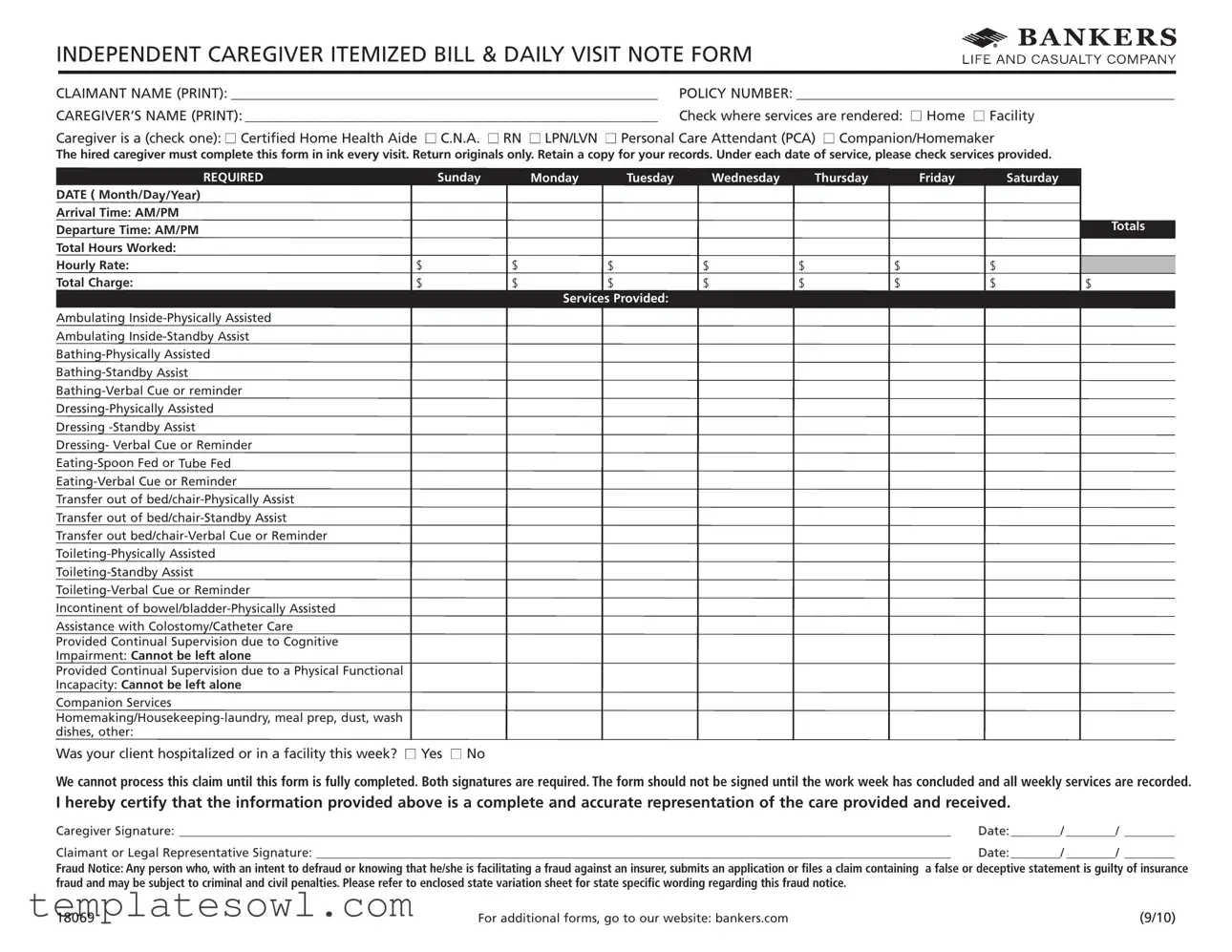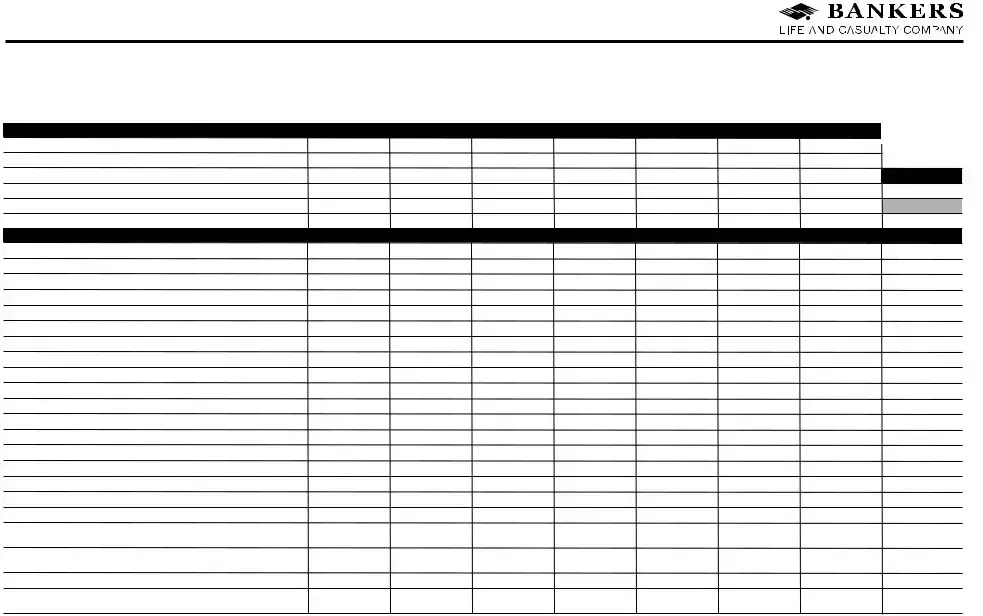The Caregiver Daily Log form serves as an essential document for tracking and billing the caregiving services provided to individuals in need. It includes fields for both the caregiver's and the claimant’s information, such as names and policy numbers, which are vital for identification purposes. The form outlines the types of care provided, including physical assistance with ambulation, bathing, dressing, and toileting, as well as companion and housekeeping services. Caregivers must indicate the location of service, which may be at home or within a facility, as well as their professional designation, which can range from Certified Home Health Aide to Personal Care Attendant. Each visit requires the caregiver to fill out the form in ink, recording the date of service, arrival and departure times, total hours worked, and the applicable hourly rate and total charge for the services rendered. A section addresses the status of the client, including any hospitalizations during the week. To ensure accuracy and completeness, the form includes space for signatures from both the caregiver and the claimant or legal representative, confirming that the logged information is correct. Additionally, there is a fraud notice, alerting all parties to the legal implications of submitting false claims. Overall, the Caregiver Daily Log form is a systematic tool designed to promote transparency and accountability in caregiving services.

